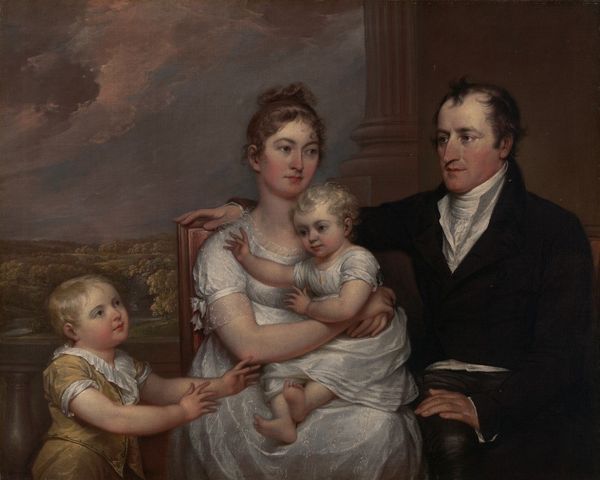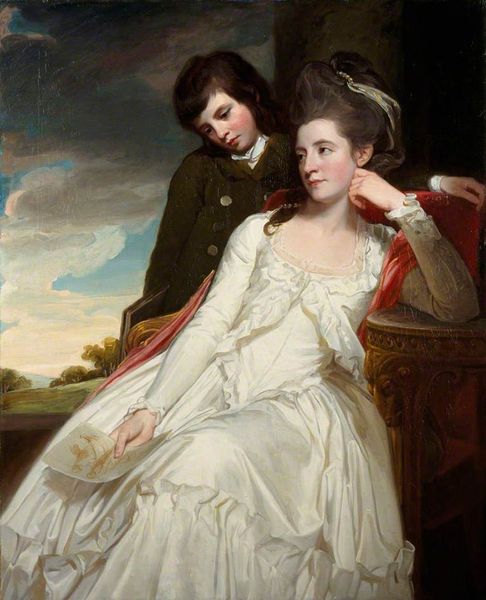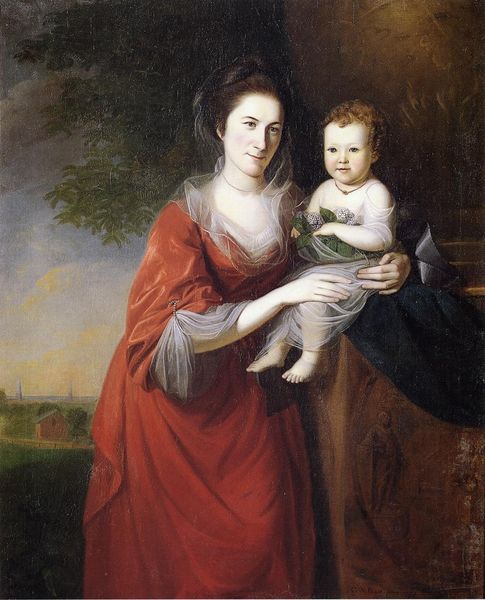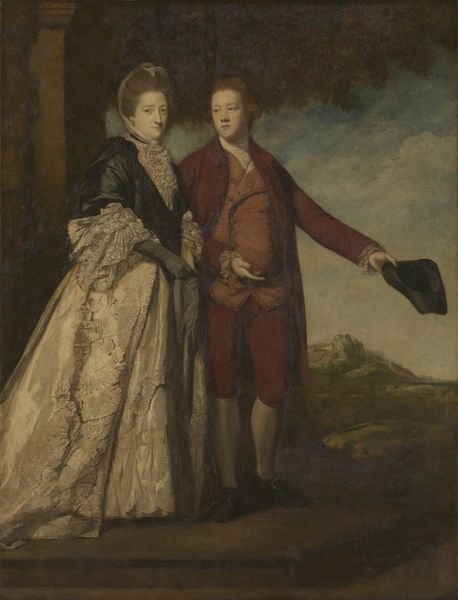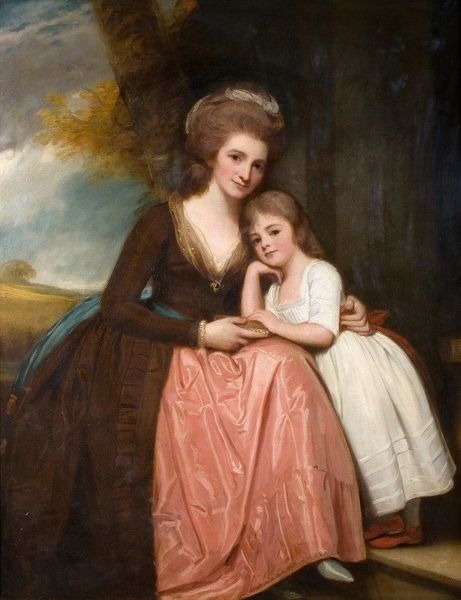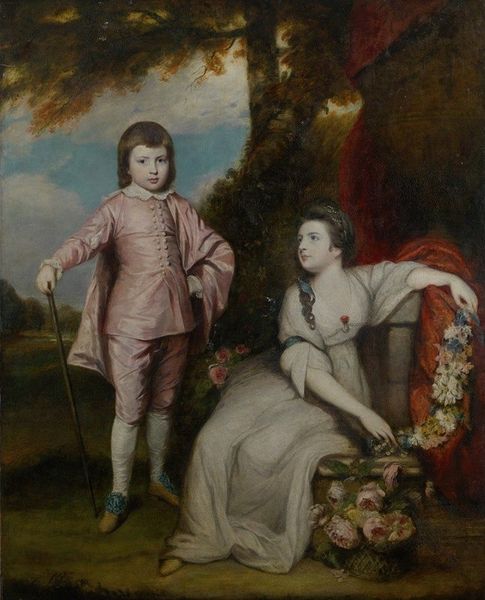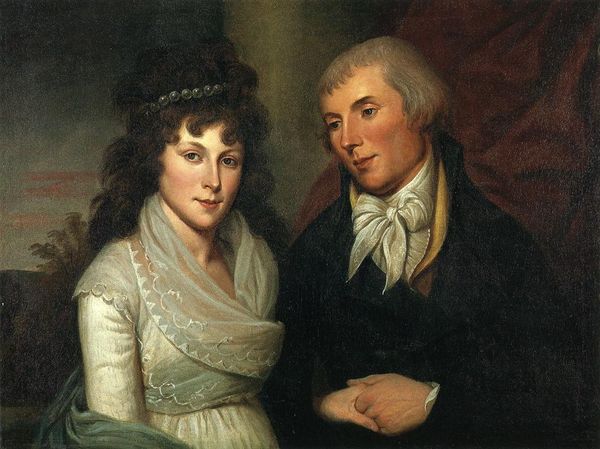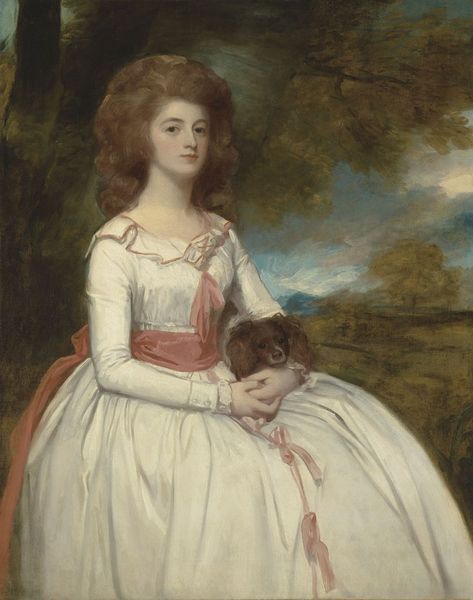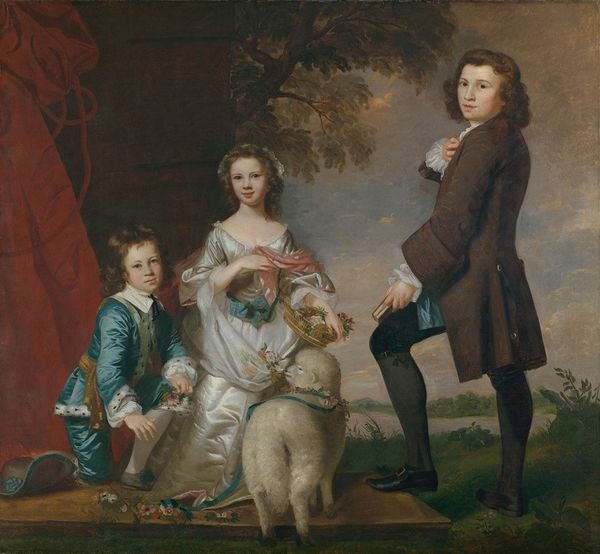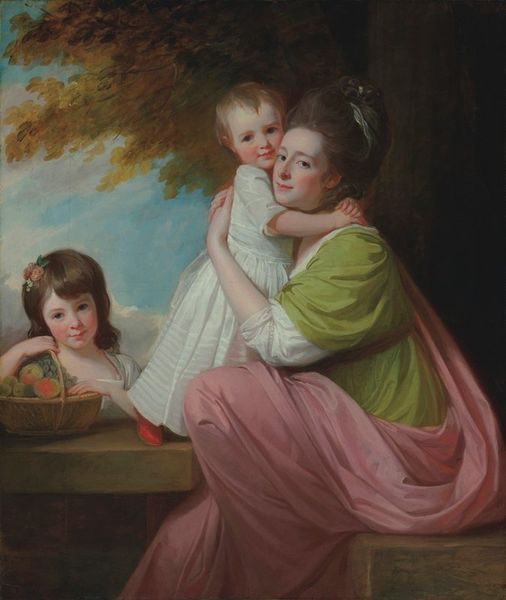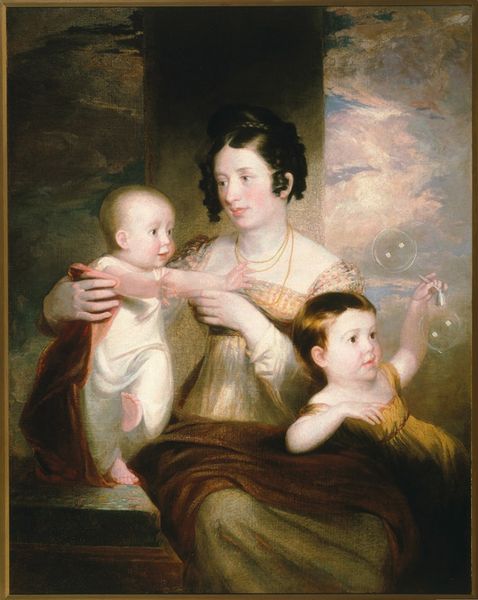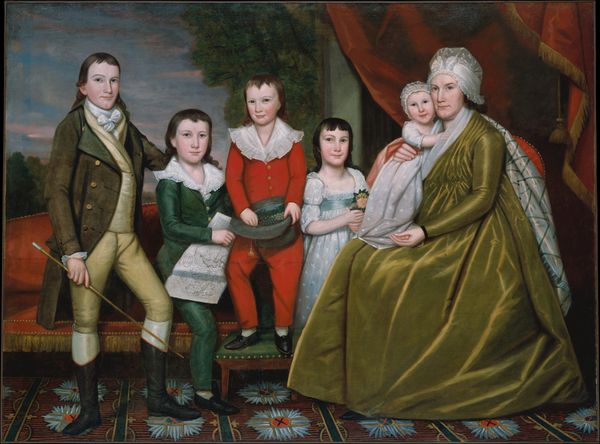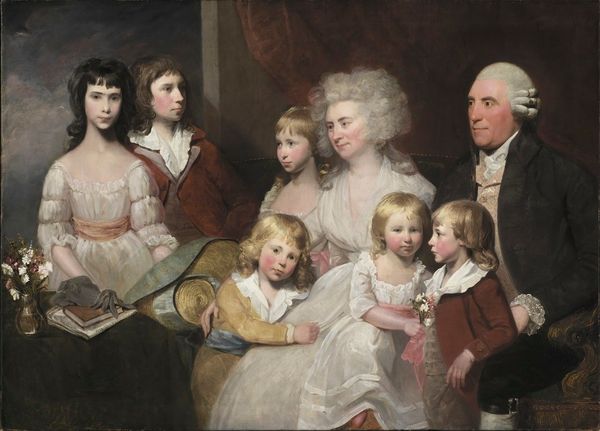
painting, oil-paint
#
portrait
#
painting
#
oil-paint
#
genre-painting
#
history-painting
#
academic-art
#
rococo
Dimensions: 127 x 101 cm
Copyright: Public domain
Curator: Painted in 1767, this portrait by Joshua Reynolds depicts Elizabeth, Countess of Pembroke, with her son, George. The medium is oil on canvas, characteristic of the period. Editor: I find it strikes a pose of aristocratic formality, yet with a touch of underlying melancholy. Their clasped hands and slightly distant gazes suggest something beyond mere representation. Curator: Reynolds was a master of conveying social status through symbolism. Notice the classical column behind them and the flowing drapery – these elements were employed to connect his subjects with the grandeur and virtues of antiquity. Such motifs gave aristocratic figures an elevated air. Editor: Absolutely, and it raises questions about how portraiture served to legitimize power. How did portraying elites against these classicized backgrounds influence public perception of authority and virtue? Were they living up to those standards, or simply aspiring to the imagery? Curator: I think it's about aspiration and inheritance, both social and intellectual. Her son holds a book, signifying knowledge and his future role, and her subtle positioning behind the boy offers protection. Look at their shared profile lines. Reynolds understood familial messaging so well. He wanted us to perceive not only who they were, but what they would become. Editor: That touches upon the powerful emotional undercurrent of this piece. Reynolds plays on our understanding of those familiar symbolic elements but gives it a slight wrench, revealing psychological states behind these people rather than merely celebrating their grandeur. Their clothing appears delicate, light… and yet her grasp of the boy seems somewhat forlorn. Curator: A slight tension there, agreed, within all that smooth academic surface. The light feels both natural and directed, theatrical even. What appears academic at first shows undercurrents of emotional truth. Editor: It really brings forward some curious implications, even a discomforting mood. The political echoes, especially for those of us today, remain poignant even after all this time. Curator: Indeed. Examining the psychological nuances Reynolds imbues within this Rococo setting certainly provides rich context, far beyond mere courtly representations.
Comments
No comments
Be the first to comment and join the conversation on the ultimate creative platform.
